- Home
- Bryce Courtenay
The Silver Moon
The Silver Moon Read online
CONTENTS
About the Author
FOREWORD
THE THINKING WELL
WHERE THE GIRAFFE COMES TO DRINK FROM THE SILVER BOWL OF THE MOON
TIMMY: THE DOG OF DOGS
I BELIEVE THIS
MUSCHKA: THE NEEDY ONE
WORDS
THIS TALK IS ABOUT WORDS
THE DOORSTOP
HOW TO WRITE A WORK OF POPULAR FICTION
THE THING THAT MAKES ME HAPPIEST
TAP-DANCING FACTS
MUSIC
THE UNFORTUNATE PROCESS OF DYING SLOWLY
AND GOD CREATED A FLOWER AND NAMED IT AFTER THE SUN
ABOUT THE AUTHOR
Bryce Courtenay is the bestselling author of The Power of One, Tandia, April Fool’s Day, The Potato Factory, Tommo & Hawk, Solomon’s Song, Jessica, A Recipe for Dreaming, The Family Frying Pan, The Night Country, Smoky Joe’s Cafe, Four Fires, Matthew Flinders’ Cat, Brother Fish, Whitethorn, Sylvia, The Persimmon Tree, Fishing for Stars, The Story of Danny Dunn, Fortune Cookie and Jack of Diamonds.
Bryce Courtenay AM passed away in November 2012, aged seventy-nine, at his home in Canberra.
brycecourtenay.com
facebook.com/BryceCourtenay
BY THE SAME AUTHOR
The Power of One
Tandia
April Fool’s Day
A Recipe for Dreaming
The Family Frying Pan
The Night Country
Jessica
Smoky Joe’s Cafe
Four Fires
Matthew Flinders’ Cat
Brother Fish
Whitethorn
Sylvia
The Persimmon Tree
Fishing for Stars
The Story of Danny Dunn
Fortune Cookie
Jack of Diamonds
THE AUSTRALIAN TRILOGY
The Potato Factory
Tommo & Hawk
Solomon’s Song
Also available in one volume,
as The Australian Trilogy
FOREWORD
BRYCE COURTENAY WAS A REMARKABLE MAN in many ways. Australia’s most prolific and biggest-selling author for over twenty years, he has sold ten million books in Australia, and millions more around the world in eighteen languages, including Japanese and Chinese.
Bryce was a passionate man, and never so much as when he was engaged in what he liked best – talking about reading and writing. He was an inspirational speaker, whether it was to one person or to an audience, and he made a lasting impression on everyone he met. Still today, almost two years since his death, he has a staggering number of ‘likes’ on his Facebook page.
His first book, The Power of One (1989), was written when he was fifty-three, and has alone sold over six million copies. It was adapted as a successful film in 1992, starring Morgan Freeman. His last novel, Jack of Diamonds, was published in November 2012, and thanks to some speedy work on the part of his printer, he was able to hold a copy in his hands shortly before he died. In between, he wrote, published and promoted an incredible twenty-one books in twenty-three years. He has been likened to a latter-day Charles Dickens, with his sweeping plots, his larger-than-life characters, and his ability to please his readers over and over again.
The story of Bryce’s life has the colour of one of his plotlines, Bryce himself one of his largest characters. He was born on 14 August 1933 in a small town in the mountainous Limpopo province of South Africa. Bryce’s mother was often visited by a man referred to as his Uncle Arthur, who gave Bryce a copy of A Writer’s Notebook by W. Somerset Maugham when he was fifteen years old. He was later to discover that this man was in fact his biological father, a fact only revealed to him in the final days of his mother’s life.
He learned from a young age the power of words. When he was just five, he was sent to an orphanage cum reform school where he was bullied because of the way he spoke. As a means of defence, Bryce quickly learned the art of storytelling: ‘Ach man, I’ll tell you a story if you stop beating me . . .’ When the danger was past, he would lie on his back, watch the clouds scud by, and dream of being a successful writer.
One day, while recovering from an accident, Bryce, who lived in a world where Afrikaans was the lingua franca, came across a beautifully bound book full of English words. He purloined the book and hid it until some time later a sympathetic teacher (to whom he later said he owed a huge debt) came into his life and helped him to learn and appreciate the English language.
Winning a scholarship at the age of eleven to the ‘posh’ King Edward VII School in Johannesburg, he tried to hide his poverty from the other boys and spent his holidays sleeping on park benches and doing odd jobs. Striking up a friendship with one of his classmates’ drivers, Bryce started teaching a small group of local Africans to read and write English. The numbers soon swelled until one day the police raided the school hall. Accusing Bryce and his helpers of being ‘communists’, the police forced them to leave South Africa. In 1950, at the age of seventeen, Bryce went north to find work in the mines of Rhodesia. The work was hard and dangerous, but he made enough money to head off to England in 1953, where he began to formally pursue a career in words at the London School of Journalism.
While in London, Bryce met and fell head over heels in love with a young Australian woman, Benita Solomon, and a year later, when he had finished his journalism degree, he followed her to the city of her birth, Sydney. The moment he reached Australia, he knew he had found a country he could call home. He arrived in 1958 and in 1959 became an Australian citizen. He married Benita in 1959 and they went on to have three sons, Brett, Adam and Damon.
Unable to get a job as a journalist, he found another way to work with words and landed a position as a junior copywriter with the advertising agency McCann Erickson. Within five years he had become one of Australia’s top copywriters, credited with award-winning advertising campaigns that included the ‘Louie the Fly’ Mortein jingle, high-profile Coca-Cola TV campaigns, the original ‘Milky Bar Kid’ commercial, and the ALP’s 1972 election campaign, ‘It’s Time’, created by a team that included Bryce.
His advertising career was on a steep upward trajectory, taking him from McCann Erickson to J Walter Thompson and eventually on to his own outfit, Harris Robinson Courtenay, which he later sold to George Patterson, becoming its high-profile creative director. By this time, like many ad men, he was working long hours, drinking far too many bottles of wine and smoking too many cigarettes. All at once, Bryce decided that time was short and he needed to ‘clean up his act’. As with everything he did, there were no half-measures. He gave up the booze and the cigarettes and took up running – obsessively. Over the next twenty-five years Bryce competed in over forty marathons around the world and, most importantly, he started to write.
Climbing out of bed one morning in 1986, Bryce went to his study and tapped out the words ‘This is what happened’, so beginning his first novel, The Power of One. This was meant to be a ‘practice book’, and Bryce didn’t expect to have anything accepted for publication until his second or third attempt. Instead, the book took one year and two minutes to write, and quickly became a worldwide bestseller, kick-starting his career as a popular novelist.
Around this time, Bryce and Benita’s youngest son, Damon, who had been a haemophiliac, was diagnosed with medically acquired HIV, contracted through a blood transfusion. Tragically Damon passed away in 1991 at the age of 24, just two months before Tandia, the sequel to The Power of One, was published. Bryce had time to dedicate Tandia to Damon, and then went on to became an outspoken advocate for the rights of families of people who had passed away from medically acquired HIV. He sat down to write an incredibly powerful account of the family’s experien
ce. April Fool’s Day (1993), apart from becoming one his most popular books, is credited with helping change public perceptions of AIDS and the treatment of people living with HIV.
Bryce retired from his advertising career to become a full-time writer in 1993, and began researching and writing the first of what became known as his ‘Australian trilogy’, The Potato Factory (1995). He wrote a total of twenty-one books: The Power of One (1989), Tandia (1992), April Fool’s Day (1993), Recipe for Dreaming (1994), The Potato Factory (1995), The Family Frying Pan (1997), Tommo and Hawk (1997), Jessica (1998), The Night Country (1998), Solomon’s Song (1999), Smoky Joe’s Cafe (2001), Four Fires (2001), Mathew Flinders’ Cat (2002), Brother Fish (2004), Whitethorn (2005), Sylvia (2006), The Persimmon Tree (2007), Fishing for the Stars (2008), The Story of Danny Dunn (2009), Fortune Cookie (2010), and Jack of Diamonds (2012). In 2001 Bryce was named bestselling Australian author of the decade with the top bestselling novels of the decade being The Power of One, The Potato Factory and Jessica.
Despite his punishing writing regime (he would sometimes write for more than twelve hours straight), Bryce always found time to share his storytelling gifts with writing students around the world. In the year 2000 Bryce conducted a writing course aboard a ship bound for Antarctica, and a final masterclass at the National Library in Canberra just six weeks before he died.
In October 2011 Bryce Courtenay married his soulmate and partner of seven-and-a-half years, Christine Gee. Christine was a pioneer in adventure travel and co-founded Australian Himalayan Expeditions (now World Expeditions), and is also a founding director of the Australian Himalayan Foundation. In addition to being his much-cherished partner in life, Bryce credited Christine with insightful help with his novels, particularly in obscure areas of research and in unravelling plot knots.
Bryce and Christine shared a passion for preserving the world’s wildlife and actively supported a range of small NGOs, including Save African Rhino Foundation, and the Thin Green Line Foundation.
Bryce loved to spend time in their beautiful garden in Canberra (it contains flowers and vegetables and is picture perfect) and also with his ever-present pets, Timmy the dog, and four cats: Princess Cardamon, Muschka, Ophelia and Pirate.
This newfound happiness was cut short in 2012 with the diagnosis of terminal stomach cancer (the original cancer had been diagnosed in late 2010 after Bryce had completed a 140-kilometre trek in Kenya). After a brave fight, Bryce passed away in November 2012, at home, with Christine, his family and his beloved pets by his side. A few weeks earlier, his final novel, Jack of Diamonds, had been published and quickly became a bestseller.
Throughout his extraordinary career Bryce always put his readers first and used to say ‘The reader is always right’. Multi-talented and multi-faceted, Bryce said, ‘In the end, if someone says, “Here lies Bryce Courtenay, a storyteller”, my life will have been worthwhile.’
Bryce’s millions of readers loved him both for his storytelling, and for his approach to life. His enduring legacy is in his many novels and in his generous spirit, which provides a continuing inspiration.
ROBERT SESSIONS AM
LONG-TIME PUBLISHER AND FRIEND OF BRYCE COURTENAY
WE ALL NEED A PLACE IN OUR MINDS where we can go to think. A place to sit quietly through a bad patch, regain our equilibrium when things go wrong, work out what path to take when we reach a confusion of crossroads in life. Somewhere to go where we pause to take the spoon out of the sink before we turn on the tap.
In a sense this is a mental sanctuary where we go to review opportunities to be taken or rejected, to sift information, calm fears and subdue that impetuous rush of blood to the head when we’ve reacted without restraint and humiliated ourselves or unnecessarily castigated or humiliated someone else. Where we decide to make the decision to apologise for our behaviour.
This quiet internal sanctuary is where we more carefully review a decision we feel forced by others to accept or one demanded by a work superior, or a parent, or brought about by peer-group pressure. Where anger or hurt slowly melts and calm and reason seeps steadily and meaningfully into our consciousness. Somewhere we can go to examine pointless pride and give ourselves permission to feel regret and courage – and by so doing dissolve the angst and resentment that causes the confusion we’ve built up in hearts and minds.
This process is not spiritual. It is not meditation. There is no ‘Ummm’ sound in the background, no yellow-robed shaven-headed priests or temple bells tinkling in the wind. Instead, this is the simple joy and gratifying task of thinking in a surrounding we know or imagine or recall from the past. A place to go sometimes literally but usually in our imaginations while seated quietly in a chair, arms resting palms placed flat onto our knees or hands softly folded into our laps. Here we commence the process of talking to ourselves, or formulate necessary imaginative conversations with others.
This thinking citadel should not be seen as the usual ‘grab-bag’ thinking, the snatching at thoughts on the run with a passing referral to experience or consequence. It is, instead, somewhat deeper, a sorting of thoughts – call it mental rummaging. Not always tidy, it’s the paraphernalia of what we know, what we yet need to learn, what we need to consign to the garbage or retain for future use.
Calm anger, reasoned regret, appropriate happiness and self-confidence are what we retain. Envy, greed or a sense of entitlement is to be tossed away as the detritus that prevents clear thinking.
Everything we say and do has a consequence, small or large, good or bad. Try to ask yourself, ‘If I win this argument I’m about to provoke, will it change anything?’ If the chances of a positive outcome exist then go calmly for the point you wish to make, and accept that your opponent’s opinion may also be valid. ‘A man convinced against his will is of the same opinion still.’
Without understanding and, as well, anticipating the consequences of our actions, we are leading lives based more or less on guesswork, on happenstance. In effect we are largely knee-jerking to the stimulus other people hurl at us. Rather than working steadily and progressively towards the achievement of an ambition or an immediate goal, we are placing ourselves in the hands of a potentially lesser self, hoping, almost by chance, for the right outcome. Your own wisdom should not be downplayed, underestimated or needlessly dismissed but it should always be tested. The same applies to the wisdom of others, which is not necessarily superior to your own.
Common sense is not the prerogative of the few. Instead it is the trial and error of our everyday lives, the accumulation of experience and the sifting-out of past negative outcomes. Do the sifting in your head, use what you know from your own achievements and what you may gain from observing others. By all means borrow, but do not replicate – one size does not fit all – improve, alter, adjust. In thought nothing is perfectly wrought, thinking is a moving feast and circumstances tend to change with every repast.
To do your thinking you may want to recall a place where you were supremely happy and contented and felt completely safe, or you may imagine an entirely original thinking site.
Wherever your thinking location, it is important to remember it is your location entirely – a place in your head where you go alone, where the words and thoughts and deeds of others can only be given admission on your own terms. People you may want to address, or from whom you wish to seek advice, are only permitted to enter your personal space in your imagination and only after you have agreed (in your imagination) to allow them to enter. This is your location where you go to unknot the jumbled complexities we all encounter in the increasingly discombobulated world we share with others.
Having located the thinking site in your imagination, here then is how you go about travelling to it in reality. Count backwards from one hundred as you journey to your secret mind place, stop counting when you’ve reached it and emptied your head of the where, what, how and when of the moment, then introduce the subject about which you need to think.
However, and this is importa
nt, do your thinking in the personal pronoun. In your private space the word ‘I’ is essential. Do the ‘I’ examination: Ask yourself, ‘How do I feel about this situation? What outcome do I want to achieve? How do I bring this about? What do I need to do to change? Am I responsible for this? Do I accept responsibility? Do I act (accept the leadership or speak out) when everyone else is scared to do so? Do I need to give up this or that bad habit to succeed and do I want to do so sufficiently to achieve my objective? Am I being a bastard/bitch? Is what I am doing fair? Am I cheating? How will I benefit from this decision? Am I being greedy at the expense of others? Is the benefit I receive worth the action(s) involved? Should I be doing this to make others around me happy? What can I do today that positively affects someone else’s life, and so becomes a shared happiness?
There are many more questions you will ask of yourself, although I feel sure you get the general idea.
These questions asked to yourself, decided upon and then acted upon, will in almost every case lead on to fame and fortune or, more importantly, happiness and contentment. With a little practice, this process of reasoned thinking will become a natural part of your life. You will find that five minutes or so is about all you can sustain at first. Later this time will increase. If sometimes you should fall asleep that too is good for you. Thinking is a learning process and well worth time and concentration. If you decide to use just ten minutes a day (no more than twenty is ever required) to arm your daily endeavour with conscious thought and decisive direction, you will be enormously gratified at the results you achieve.
I WAS BORN IN AFRICA and as a small boy of seven was placed in a hostel for boys deep in the rural north of Southern Africa. The Boys Hostel was a horrid, lonely place, where I was constantly bullied for somehow being different, though quite why was a mystery but most definitely had something to do with the terrible fact that I didn’t have a roll of skin covering the top of my penis, that I had been circumcised.

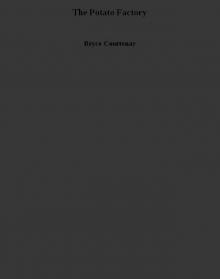 The Potato Factory
The Potato Factory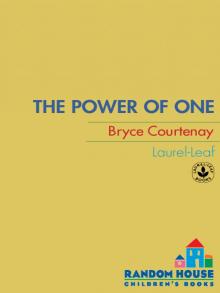 The Power of One
The Power of One Jack of Diamonds
Jack of Diamonds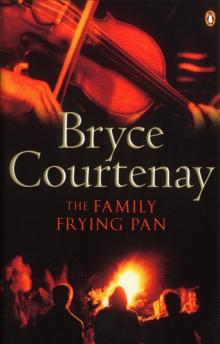 The Family Frying Pan
The Family Frying Pan April Fool's Day
April Fool's Day Smoky Joe's Cafe
Smoky Joe's Cafe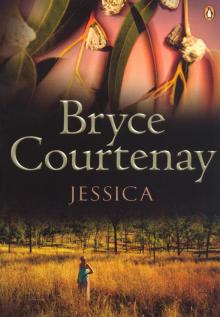 Jessica
Jessica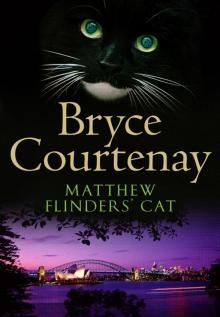 Matthew Flinders' Cat
Matthew Flinders' Cat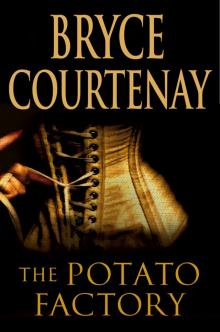 Potato Factory
Potato Factory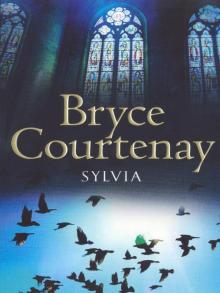 Sylvia
Sylvia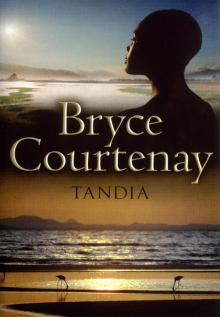 Tandia
Tandia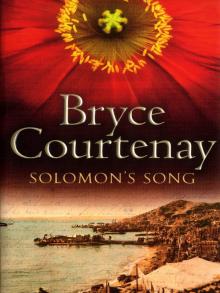 Solomon's Song
Solomon's Song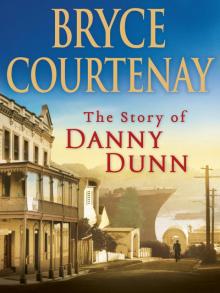 The Story of Danny Dunn
The Story of Danny Dunn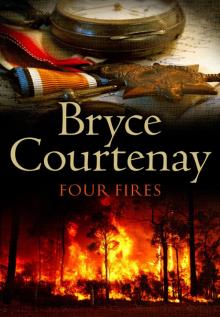 Four Fires
Four Fires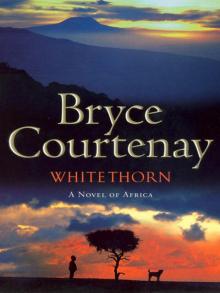 Whitethorn
Whitethorn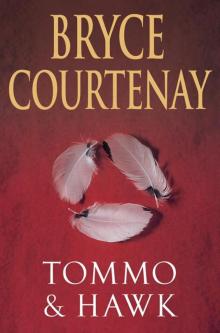 Tommo and Hawk
Tommo and Hawk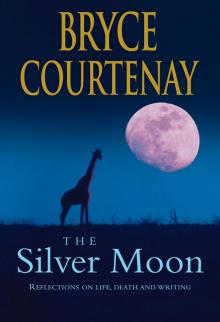 The Silver Moon
The Silver Moon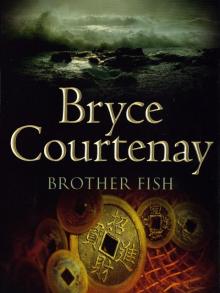 Brother Fish
Brother Fish FORTUNE COOKIE
FORTUNE COOKIE The Persimmon Tree
The Persimmon Tree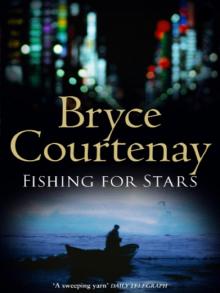 Fishing for Stars
Fishing for Stars